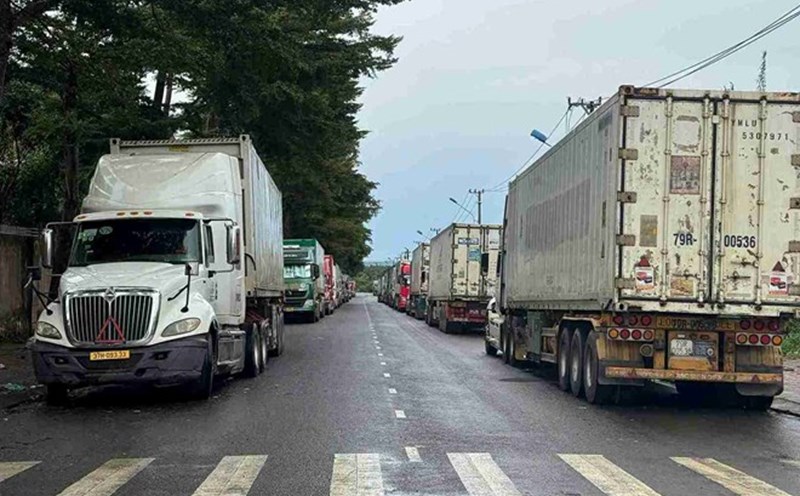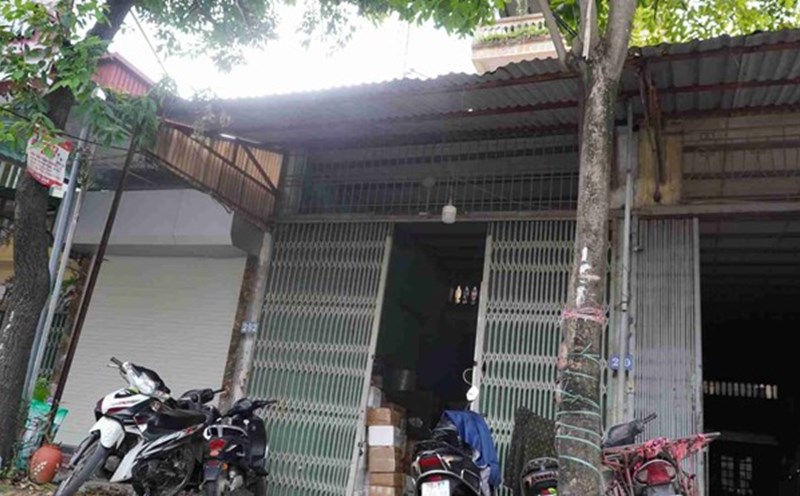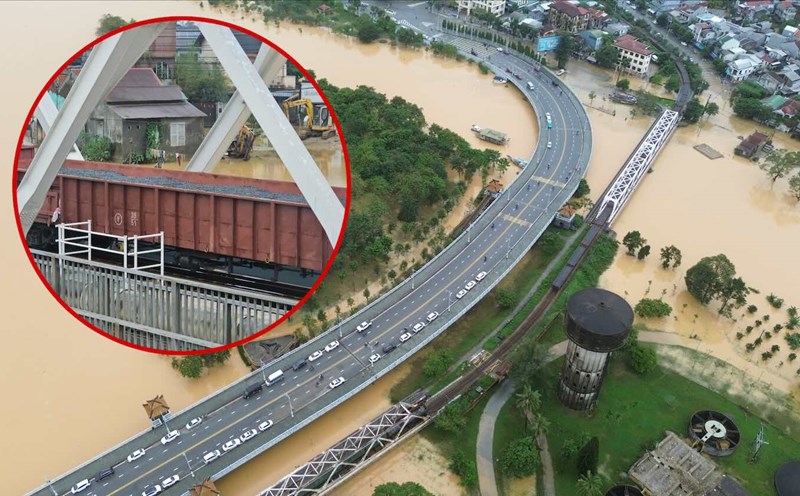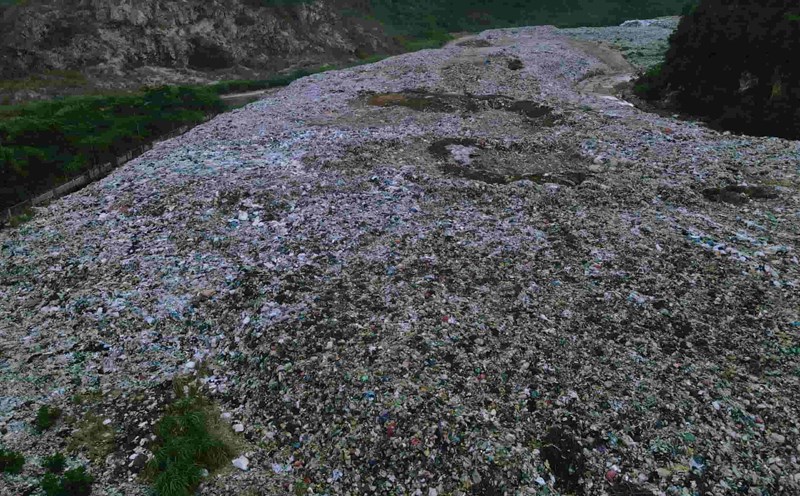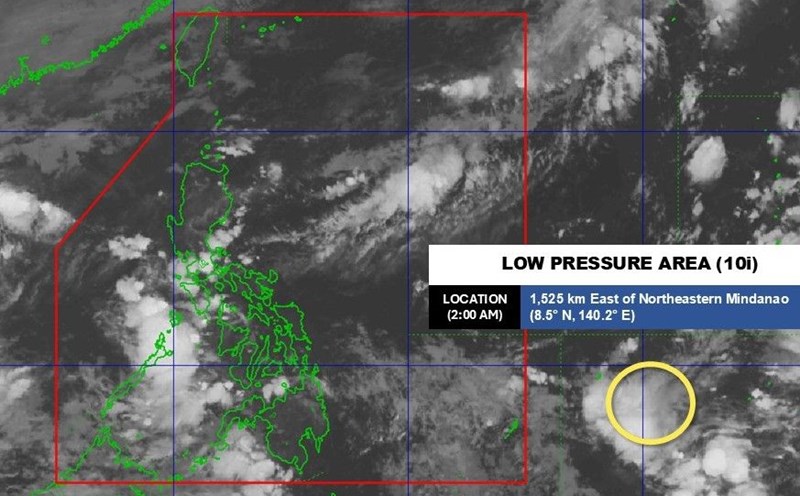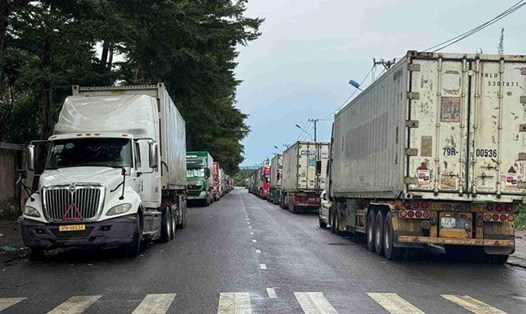Traffic jam for durian at border gates
According to the reporter's records, before October 27, the number of vehicles congested at the border gate had reached more than 700 at one point, mainly durian vehicles.
Although there is no longer a traffic jam on National Highway 1A, the inability to clear customs has caused many durian vehicles to store their own warehouses, even renting additional cold storage to store goods, increasing the cost of shipments.
Talking to reporters, Mr. Vu Quang Khanh - Deputy Head of the Dong Dang - Lang Son Border Gate Economic Management Board (BMO) said that the main reason is that many laboratories serving the testing of agricultural product quality for export have simultaneously suspended operations for maintenance, causing difficulties in checking Cadmium and O gold product indicators.
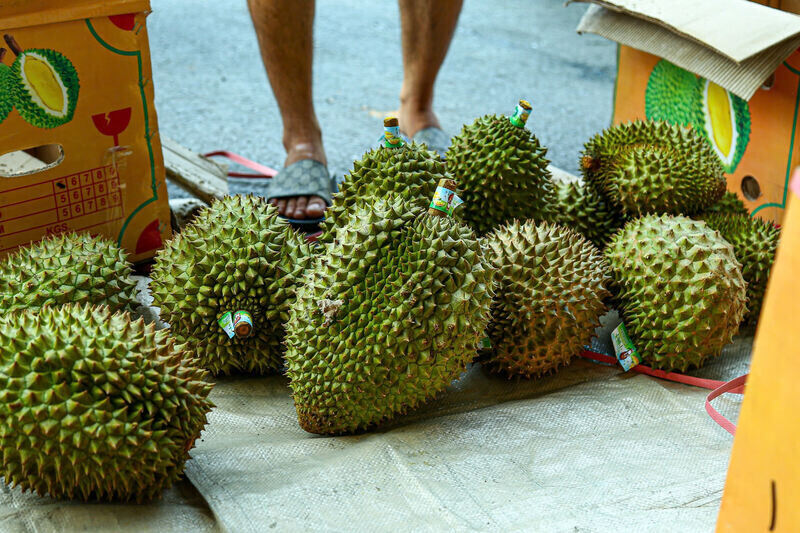
Faced with the congestion, Mr. Khanh said that this incident has caused delays in goods customs clearance, especially in the context of the last months of the year being the peak agricultural export season.
"The laboratory system serving agricultural exports is currently jointly managed by the Ministry of Agriculture and Environment.
However, these units operate as independent enterprises in each locality, causing many laboratories to temporarily suspend operations, the testing capacity nationwide decreased sharply," said Mr. Khanh.
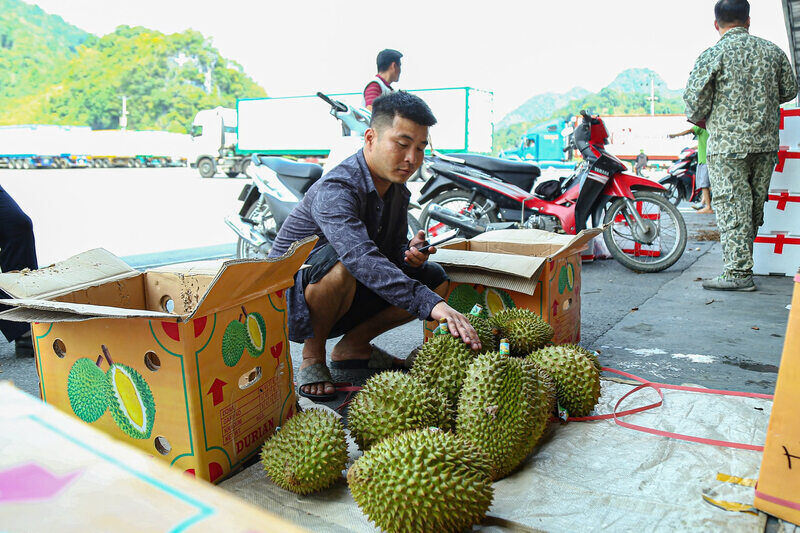
According to statistics, although there are focal laboratories in some localities in Hanoi and the Central Highlands provinces, the number of laboratories recognized by China is still very small, only about more than 10 units nationwide.
"Currently, congested durian vehicles are being regulated to enter cargo transit areas such as Tan Thanh bus station, Xuan Cuong bus station, Viettel Logistics Park.
The cargo transit points are still capable of temporarily receiving goods, but if this situation continues, especially during the peak export season at the end of the year, the damage to businesses will be huge, said an official of the Border Gate Management Board.
Farmers, import-export units cried
Also according to a representative of an agricultural import-export unit, on average, a batch of durian can be stored fresh in a frozen container for 2 weeks. Some vehicles with better air conditioners may take a few more days, but not significantly.
In case of congestion, a container truck that starts the engine continuously to store durian will consume about 50 liters of oil, equivalent to nearly 1 million VND/day, calculated according to current oil prices.
"Not to mention that the transportation time to the border gate will take about 3-7 days depending on the weather and traffic conditions. China may refuse to accept the goods due to late delivery. In general, durian is like gambling," the representative of this enterprise shared.
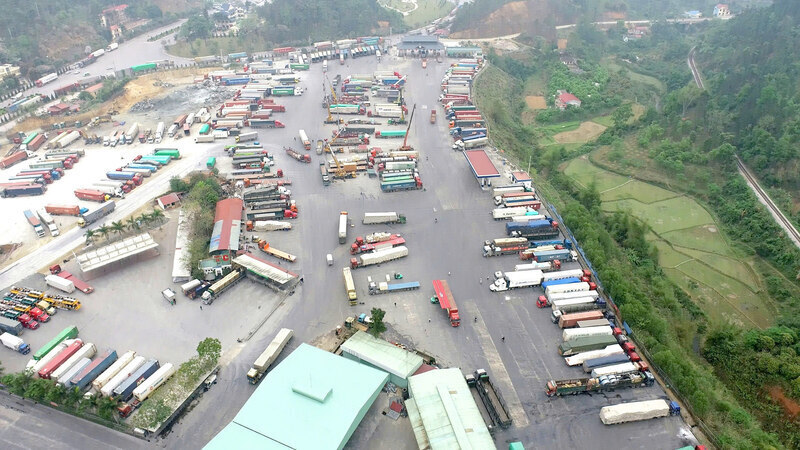
Mr. Le Anh Trung, Chairman of the Dak Lak Durian Association, confirmed that some laboratories assigned to test chemical residues (Cd, gold O...) for exported durian products have resumed operations.
Currently, Dak Lak province is entering the end of the durian harvest season. It is expected that there will be about 40,000-50,000 tons of durian harvested in the areas of Krong Nang, Krong Buk, Ea Hleo...
Ms. N.H. (Dlie Ya commune, Dak Lak province) said: "In recent days, there has been continuous heavy rain, ripe durian has fallen while traders are still hesitant to come and harvest and buy agricultural products. On August 27, my family had to let traders harvest more than 5 quintals of durian at a cheaper price, lower than the market price to avoid losses".
Previously, from October 11, 2025, laboratories assigned to serve the testing of chemical residues (cadimi, gold O...) for durian products for export have simultaneously suspended operations to maintain and upgrade the system.
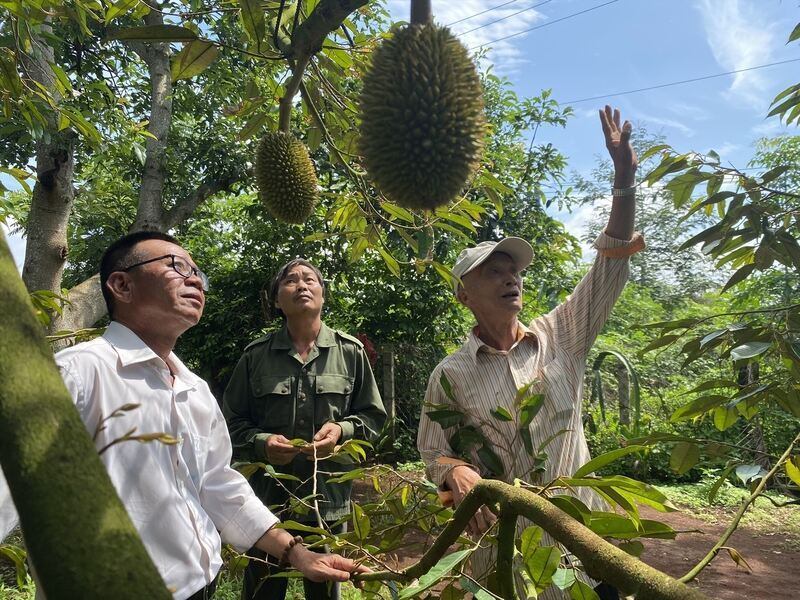
This happened right at the time when the province was in the peak of the durian harvest, expected to last for another 20 to 30 days before the harvest ended.
The temporary suspension of laboratories has caused a series of serious consequences.
Specifically, the enterprise was unable to complete the testing and certification procedures for export shipments according to regulations, causing nearly 2,000 durian containers to be congested at locations.
Due to the output bottleneck, businesses were forced to temporarily suspend purchases, causing durian prices in the market to drop sharply.
Many farming households do not dare to cut their gardens, leading to the risk of thousands of tons of ripe durian falling and damaging right in the garden.

